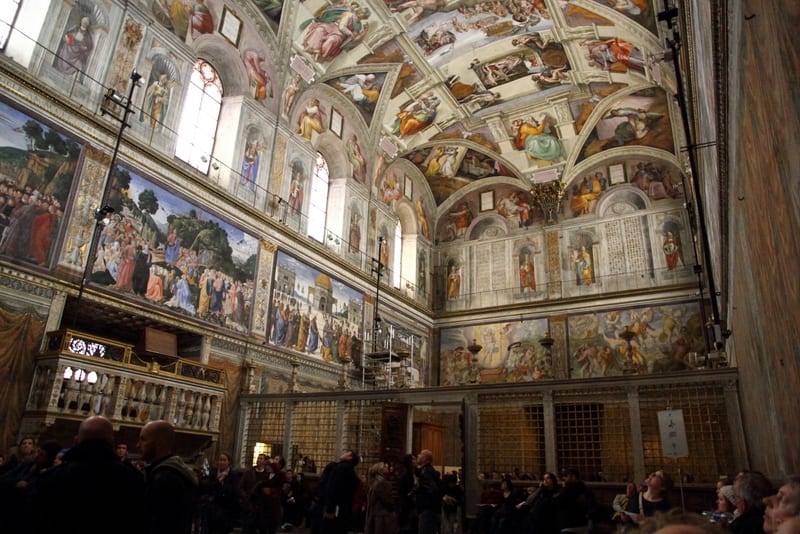The Vatican’s Sistine Chapel, perhaps the most famous Catholic prayer sanctuary in the world, has a deep, hidden connection to the Jewish faith: it shares features and measurements with King Solomon’s Temple in Jerusalem as described in the Bible.
Hosting millions of visitors every year, it seems incredible that this very Christian edifice could be modeled after the Jewish Temple. The astounding similarities are revealed in The Sistine Secrets, a fascinating book by Vatican tour guide Roy Doliner and Rabbi Benjamin Blech.

“The Chapel’s connection to the Jewish Temple is well known by scholars,” Rabbi Blech told Breaking Israel News. “But tourists do not know it and most Vatican guides do not known it or tell about it. The Vatican has a fixed way of telling the story of the Chapel and that is what is given over.”
Located in the Apostolic Palace, the official residence of the Pope, in Vatican City, the Sistine Chapel is named for Pope Sixtus IV , who had it built between 1477 and 1480. The Chapel is renowned for the incredible frescos that decorate its interior, including Michelangelo’s The Last Judgment.
Pope Sixtus IV spent vast amounts of the Vatican’s money on reviving the splendors of Rome, rebuilding churches, and founding the Vatican library. But his most famous project of all was the reconstruction of the Palatine Chapel, which he renamed the Sistine Chapel after himself.
The new plan of the Sistine Chapel was more than just a renovation, however; the pope took the opportunity to incorporate Jewish elements of Temple worship as he rebuilt. Several aspects of the Chapel’s new measurements and design matched those of the first Holy Temple completed by King Solomon – exactly.
As detailed in the Book of Kings, the measurements of the Heichal, the inner sanctuary of the Temple, are 40.9 meters (134 ft) long, by 13.4 meters (44 ft) wide and 20.7 meters (68 ft) high. These are the exact dimensions of the Sistine Chapel.
Another feature matching that of the Jewish Temple is the double level construction. The Western half of the Sistine Chapel, containing the altar and the private area for the Pope and his court, is some six inches higher than the Eastern half. This elevated section corresponds to the Jewish Temple’s Kodesh HaKodashim, the Holy of Holies, where only the High Priest could enter, only once a year, on Yom Kippur, the Day of Atonement.

In the Jewish Temple, the Paroket was the curtain separating the rest of the Temple from the Holy of Holies. Correspondingly, the Sistine Chapel features a huge white marble partition grill in a parallel location with seven marble flames on top, mirroring to the seven-branched menorah (which ancient legend suggests is hidden in the Vatican today), or candelabra, that glorified the Jewish sanctuary in Biblical times.
According to Rabbi Blech, the changes were motivated by a desire to co-opt Jewish concepts.
“The motive for basing elements of the Sistine Chapel on Solomon’s Temple is the Replacement Theory which is basic Catholic doctrine,” the rabbi told Breaking Israel News.
“They believe they are the true descendants of Abraham, Isaac and Jacob and that after Jesus, God rejected the Jews and chose them.
“As part of this theory, they wanted to replace Jerusalem with Rome and so they ‘sanctified’ Rome by appropriating elements from Jerusalem.”
Aug. 16 Editor’s Note: Replacement Theology, while present in some Catholic teachings, is not part of the Church’s official views. In 1965, Pope Paul VI published the Nostra Aetae, a seminal document disavowing many anti-Jewish aspects of Catholic doctrine.




